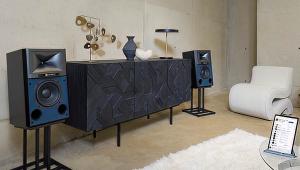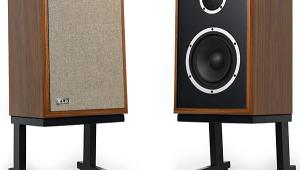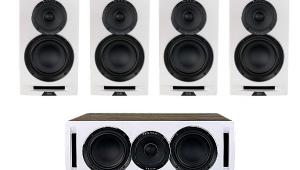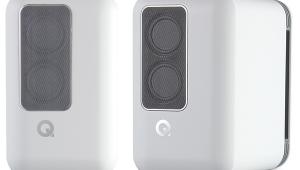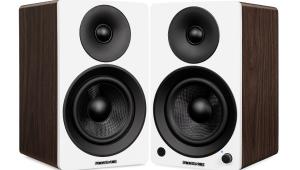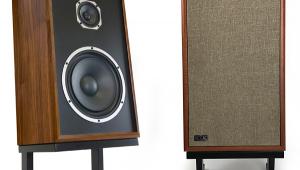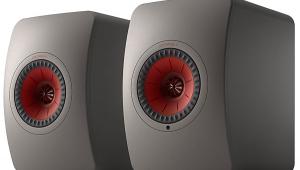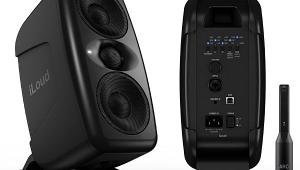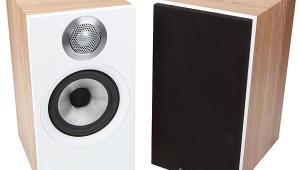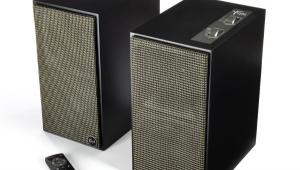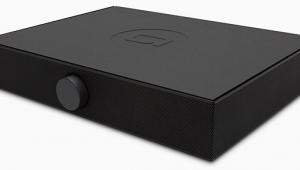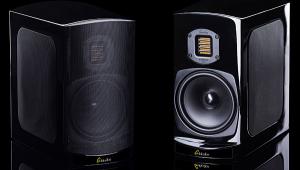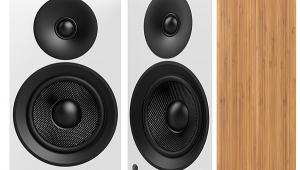Sony SS-NA5ES Speaker System

AT A GLANCE
Plus
Scandinavian birch
enclosures
Triple tweeter array
Warm and fatigue-free
Minus
Not exactly cheap
THE VERDICT
A pricey speaker system that offers an edge to those who want the very best.
Sony has always had a sense of its own destiny that transcends any one of its multifaceted operations. To gamers, it is the guardian of the PlayStation franchise. Moviegoers know it as the owner of Sony Pictures, while music lovers know it as the home of Dylan, Springsteen, and Adele. Tech historians recall how Sony’s small transistor radios and Walkman cassette player, respectively from the 1950s and ’70s, paved the way for the iPod in the ’00s. Cutting-edge computer audiophiles are excited about the potential of Sony’s DSD file format to transform the nascent world of high-resolution music downloads. Sony might have made the cameras that shot the high-def programming you view at home as well as the HDTV you view it on. Yet through it all, there is an enduring Sony-ness, just as there is an enduring Apple-ness that pervades that company’s expansion from computing into music and e-book retailing.
Sony continues to be a fount of talent, as I haven’t failed to note at trade shows over the past several years. Every time I’ve ducked my head into an exhibit featuring Sony’s AR speaker line since its 2008 debut, I’ve loved what I’ve heard, even when it’s been playing in an otherwise empty room. Now Sony has added a relatively more affordable ES speaker line that includes center and subwoofer models, making it suitable for both music and home theater. Sony-as-audiophile-speaker-maker may not be the Sony you know best, but it is a Sony that must be taken seriously.
A Musical Approach to Music
I have a distant memory of reviewing Sony’s SS-M7ES tower—designed by Dan Anagnos, ex-Polk—back in the ’90s. It was a well-built and well-rounded performer with an ingratiating personality. Sony’s current AR and ES speaker lines were developed under the guidance of Yoshiyuki Kaku, whose love for music propelled a move two decades ago from the semiconductor division to the audio engineering group. Like any good speaker designer, he regularly recalibrates his ears in concert halls and puts in long hours evaluating parts and materials. He listens not just for objective technical parameters, but on a subjective feeling level as well, making his work both a science and an art. When I visited Sony’s listening rooms in Tokyo recently—where the AR and ES speakers were sounding great, as usual—the gotcha moment came when Kaku discussed his philosophy for handling resonance. Rather than try to eliminate any trace of it, as conventional wisdom might dictate, he seeks out materials with euphonic resonances and integrates their harmonic character into his designs. In that sense, he thinks more like a musical-instrument designer than a conventional speaker designer. He has made friends with resonance.
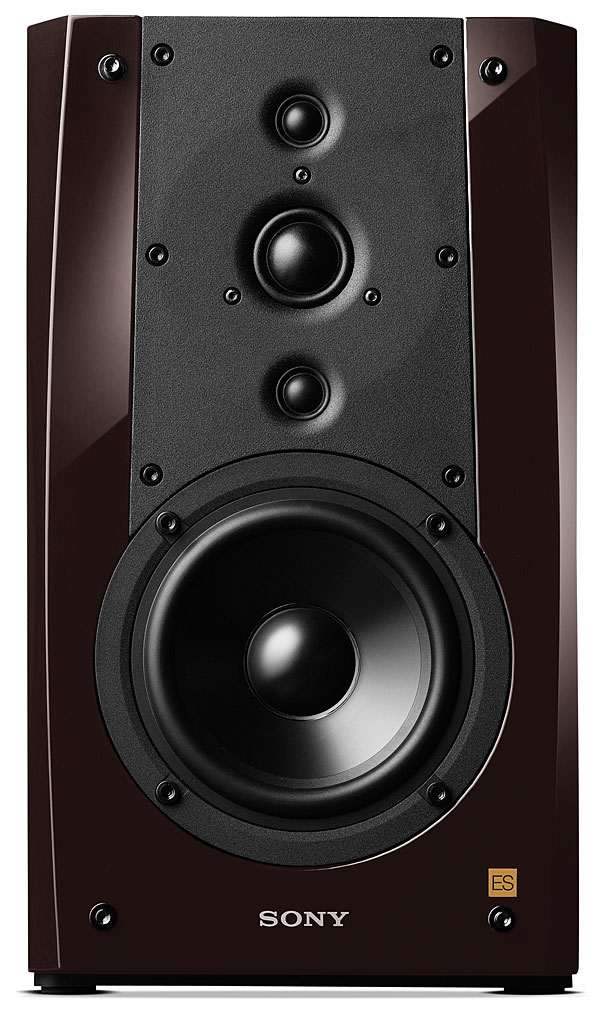
Sony’s current speaker lines include the AR series with two tower models. See our sister publication Stereophile for reviews of the AR-1 by Kalman Rubinson (stereophile.com/content/sony-ss-ar1-loudspeaker) and AR-2 by John Atkinson (stereophile.com/content/sony-ss-ar2-loudspeaker). They sell for $27,000/pair and $20,000/pair, respectively. The ES line is newer, having made its debut at the January 2013 Consumer Electronics Show. It includes another tower, the SS-NA2ES ($10,000/pair), plus three models reviewed here: the SS-NA5ES stand-mount speaker ($6,000/pair), SS-NA8ES center ($3,000), and SA-NA9ES subwoofer ($4,000). While these prices are not exactly cheap, ES is more accessibly priced than AR and diverse enough to support a 5.1-channel configuration.
The most prominent elements of the ES line’s resonance-control approach are the 0.75-inch-thick enclosures. All ES models use the same Scandinavian birch as the AR models (though the ARs substitute Hokkaido maple in the baffle). Baffles include 11 layers of birch, with their wood grains arranged at right angles to one another, and nine layers of adhesive—you can see the laminations in the end-grain when the speaker is upside down. The bottom surfaces are thick metal plates intended to further control cabinet resonance. They are rubber-footed; spikes are not provided or necessary, says Sony. Assembly takes place in Hamamatsu, Japan, at a plant that also builds piano parts. The glossy veneer finish is dark, making the grain invisible and unintrusive in a dark room but flat-out gorgeous when struck by light.
Tweeters in the stand-mount and center speakers take the unusual form of a patented I-Array, with a pair of Sony-developed 0.75-inch tweeters above and below a 1-inch tweeter co-developed by and sourced from Scan-Speak in Denmark. All are textile soft domes. The two smaller tweeters are not super-tweeters; the three operate together as a single “sound dispersion tweeter system.” All three operate at the same crossover, but due to the physical characteristics of the two smaller tweeters, they start functioning at a slightly higher frequency and disperse more widely. To avoid peaks and dips from the vertically adjacent tweeters, the designer manipulated the distance between them, their depth from the faceplate, and the radius of a subtle curve around the main tweeter. The advantages of the three-tweeter approach are said to be optimized directivity and improved ability to reproduce the ambience of a recording. Single woofers in the stand-mount and dual woofers in the center all utilize 5.25-inch aluminum cones with dual ports on the back.
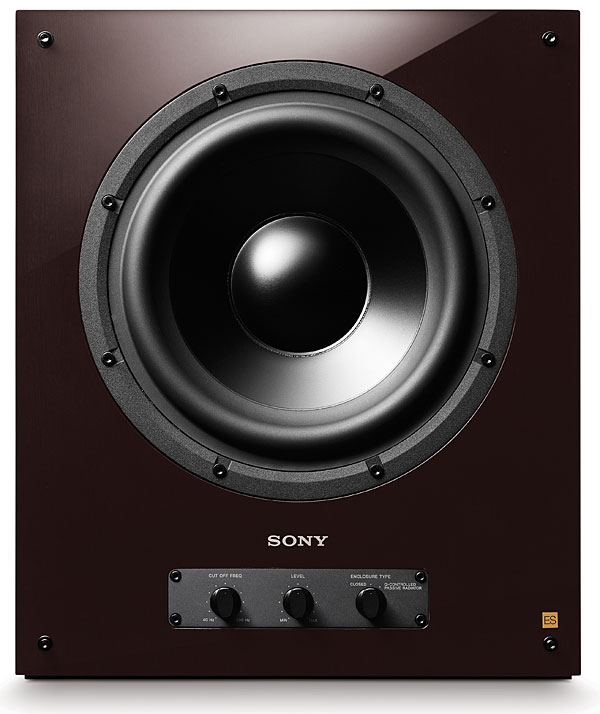
The subwoofer has 10-inch aluminum-coned woofers on both front and back of a sealed enclosure. Crossover and level controls are in front, where they are easy to adjust; the power controls and indicator are in the back, making the latter mercifully invisible. Also on the front is an unusual Enclosure Type control with two settings, Closed or Q-Controlled Passive Radiator. It essentially determines whether the back driver operates actively (propelled directly by the amplifier) or passively (propelled by the pressure in the cabinet generated by movement of the other driver). The difference between the two settings as implemented here might be roughly summed up as quantity versus quality. In my room, the Closed setting produced greater bass output, but the Q-Controlled Passive Radiator setting produced what I would describe as more disciplined bass output. Associated equipment included a Pioneer Elite VSX-53 A/V receiver, Oppo BDP-83SE universal disc player, Micro Seiki BL-51 turntable, Shure M97xE phono cartridge, Onix OA 21s integrated amp serving as phono preamp, Lenovo Win 7 laptop running Foobar 2000, and Meridian Explorer USB DAC. All movie demos were Blu-ray Discs with DTS-HD Master Audio soundtracks.
How Sweet It Is
The ES speakers do have an identifiable personality, a sweetening effect that was evident across all movie and music demos, but it was not crude and did not come at the expense of detail or transparency. At first listen, before proper break-in, they were “clean, smooth, and a little dead,” as my notes remind me. But this initial top-end reticence was soon supplanted by timbral delicacy and a soundfield that made my room feel much larger than it was. The midrange was big, confident, and on speaking terms with both the midbass below it and (as time went on) with the highs above. The stand-mount and center had strong bass response for their sizes and mated so well with the sub that at times—when I got the sub settings just right—I could not hear the crossover with voices even when I listened for it. That is unusual. The sub was generously powerful and well controlled in either of its modes. As usual, I refrained from using room correction to dial it in perfectly, but I quickly learned when to cross the room and shift from the bountiful Closed setting to the wilier Passive Radiator setting or vice versa. It even got to be fun.
Premium Rush stars the athletically rubber-limbed Joseph Gordon-Levitt as a bike messenger zipping through the streets of Manhattan. The mostly outdoor soundfield was spacious but weighted toward the front, presumably a property of the soundtrack, since the stand-mounts in all four corners were identical. Aggressive traffic noise and car-on-bike violence blew gusts of midrange energy into the speakers, but no matter how loudly the soundtrack blared, I remained comfortable—and increasingly awestruck by how well all channels lifted clear of the speakers. “Gently addictive,” I wrote.


